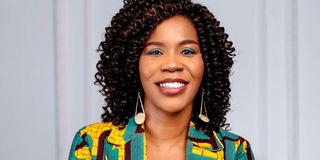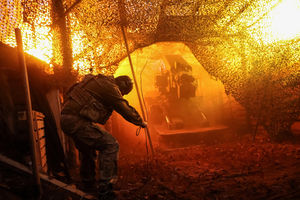Premium
Expert advice on early diagnosis and treatment of breast cancer

Dr Miriam Mutebi is a Breast Surgical Oncologist and Assistant Professor at the Aga Khan University Hospital.
Dr Miriam Mutebi, a breast surgical oncologist and assistant professor in the Department of Surgery at the Aga Khan University Hospital, speaks to the Nation about breast cancer.
How common is breast cancer?
Breast cancer is on the rise among all women worldwide. Locally, one in eight women will develop breast cancer in her lifetime. National data in Kenya shows that the average age of diagnosis is between 40 and 55 years. However, around 30-40 percent of women are diagnosed before the age of 40. The most common type of breast cancer is hormone-positive cancer, which occurs in about 60-70 percent of women. Other breast cancer subtypes make up the rest of the breast cancers diagnosed.
Is it necessary to have a mastectomy after being diagnosed with breast cancer? Does it depend on the type of breast cancer?
The decision to have breast conservation surgery (preserving the breast) is not dependent on the type of breast cancer (hormone positive versus hormone negative tumours), but rather on the extent or size of the tumour or the stage of breast cancer at diagnosis.
A small lump in a single area of the breast can be successfully removed by a procedure called lumpectomy or breast conservation surgery, in which only the area that has cancer is removed. The caveat to breast conservation surgery is that one needs to have radiotherapy (a special type of x-ray) to the area once it has healed. This reduces the chance of the cancer coming back in that area. This is a safe procedure and the combination (lumpectomy plus radiotherapy) is the equivalent of a mastectomy. However, if one is unable to receive radiotherapy for medical or logistical reasons, it is safer to have a mastectomy.
If the cancer cells are in more than one place in the breast at the time of diagnosis, it is safer to remove the whole breast, which is called a mastectomy. If you have had a mastectomy, you can have reconstructive surgery, which involves rebuilding and creating a new breast either during the original cancer surgery (immediate reconstruction) or after the mastectomy (delayed reconstruction). This reconstruction can be done using your own body tissue or with implants.
Also read: Breast self-examination (The complete guide)
Does total breast removal reduce the risk of breast cancer recurrence?
Regardless of which operation is performed, there is always a small chance of local recurrence. The reason why both options (mastectomy or breast conservation and radiotherapy) are offered to appropriate patients is that the chances of local recurrence are similar with both techniques. Where possible, both options should be offered to breast surgery patients. It is important to recognise that many cancers can recur in other parts of the body, and this depends on the biology of the tumour, not the surgery offered. Medical oncologists usually work with surgeons, radiation oncologists and the rest of the multidisciplinary care team to prescribe systemic therapies (pills or chemotherapy) to minimise the chances of tumours coming back. These therapies usually continue for a long time after initial treatment.
What percentage of breast cancer patients are cured?
This depends on the stage of the cancer at diagnosis. It is important to know that all breast cancers, regardless of stage, are treatable. If detected early, breast cancer is not only treatable but also curable. With advances in treatment and science, breast cancer has become like any other chronic health problem and can be successfully treated and cured or well managed for years if it is not curable at the time of diagnosis. In a recent report by the Commission on Women, Power and Cancer, to which I contributed, one of our key findings was that of the 2-3 million women who die prematurely from cancer each year, 1-5 million deaths could be prevented through primary prevention or early detection strategies, while a further 800,000 deaths could be avoided if all women everywhere had access to optimal cancer care.
According to our national guidelines, we recommend a clinical breast examination and mammogram at least once a year for women over the age of 40. Between 55 and 75, we recommend a mammogram every two years. Between 35 and 40, have a clinical breast examination and discuss having an ultrasound or mammogram with your doctor.
Between 25 and 35, have a clinical breast examination at least every three years.
What's the average age of patients you see with breast cancer?
Breast cancer has traditionally been a disease of older women, typically postmenopausal. However, this trend has reversed and we are now seeing much younger patients. There are factors for breast cancer that we call non-modifiable risk factors, and age is one of the most important predictors of breast cancer—the older you get, the higher the risk.
Being female increases the risk of breast cancer and a family history accounts for 5 to 10 percent of all breast cancers.
Then there are modifiable risk factors—things you can control, such as diet and regular exercise, that can lower your risk. Avoiding long-term use of hormonal contraceptives and avoiding alcohol can also help reduce your risk. Become more aware of your breasts, learn how to do a self-breast exam and get screened if you are in the appropriate age group. Do not wait until you feel a lump before getting screened, as mammograms can detect lumps before you feel them. Early detection makes a huge difference!
Read here on Surviving and thriving after breast cancer treatment




